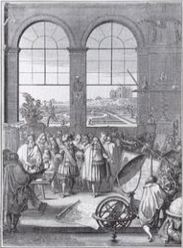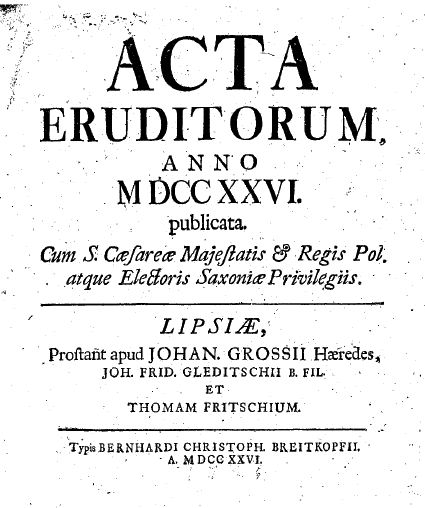|
For the first time, science became a central piece of public discourse. Until then, much of what is now considered scientific inquiry was pursued by a relatively small group of academics whose writings did not enjoy widespread circulation. Beginning in the late 17th century, there was a twofold development in academia that would bring about a rapid democratization of scientific knowledge. The first was the foundation of the Paris Academy and the Royal Society of London, two institutions whose primary purpose was to do scientific research and report their conclusions to the public.
The second major development in academic life was the rise of scientific journals. These publications were often produced by the academies themselves (e.g., London's Philosophical Transactions and Paris's Mémoires), though a fair number were produced independently (e.g., the Acta Eruditorum and Crelle's Journal). These new journals circulated to a wide audience that included many outside the scientific community. In one sense, these are among the first "popular science" magazines, in that scientific results were reported to an audience of non-specialists. As such, the 18th century was a time when scientific tracts could become bestsellers. One of Euler's books, Lettres à une princesse d'Allemagne (Letters to a German Princess), went through thirty-eight printings in nine different languages, and remained in print for a century. By the middle of the 18th century, the scientific revolution was in full swing; decades of research had been compiled, exchanged, corroborated, and communicated to the public. As the most prolific mathematician and scientist of the time, Leonhard Euler made significant contributions to many different fields, including optics, mechanics, artillery, naval science, planetary motion, and several branches of calculus. More recently, the 20th century science historian Clifford Truesdell has calculated that of all the mathematical and scientific work published during the whole of the 18th century, a full 25% was written by Euler. For more information on the Enlightenment and the Eighteenth Century, see our Resources page. |

